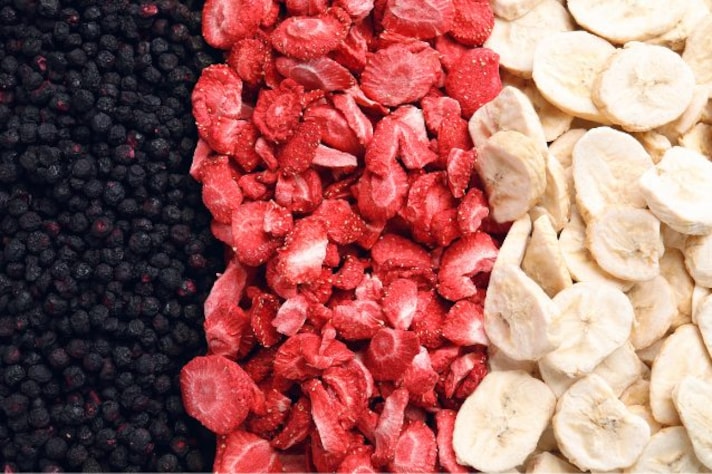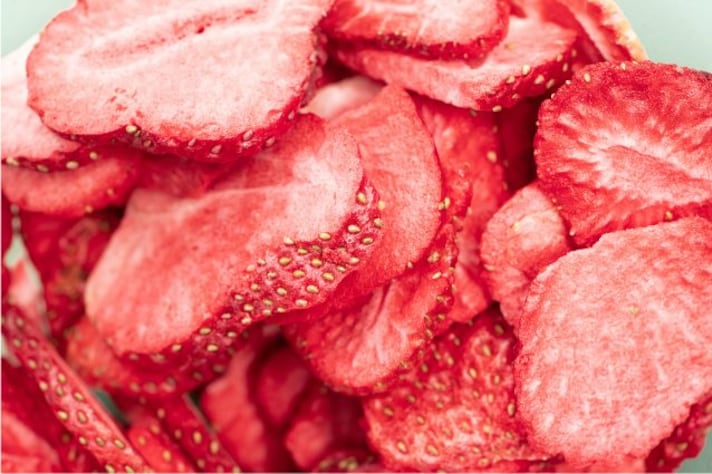
Freezing food is a well-known method for extending its shelf life, allowing us to preserve the freshness and nutritional value of our favorite ingredients. However, there exists a technique called dry-freezing, or freeze-drying, which takes food preservation to a whole new level. Typically, this method requires specialized machinery, but what if we told you there are ways to achieve similar results at home?
First of All: What is Freeze-Drying?
Dry-freezing, or freeze-drying, is a process that removes moisture from food while preserving its structure and nutritional content. Professionally, this is achieved through a three-step process: freezing the food, lowering the pressure, and then adding heat to sublimate the frozen water directly from solid to gas. This method results in food that is lightweight, shelf-stable for years, and can be rehydrated to its original form with water. In commercial settings, dry-freezing can extend the shelf life of food by up to 25 years, making it a valuable technique for long-term storage and emergency preparedness.

What Foods Can Be Dry-Frozen?
Many types of food are suitable for dry-freezing, including fruits, vegetables, meats, and even full meals. Foods with high water content, such as strawberries, apples, and tomatoes, are ideal candidates as the process effectively removes the moisture while retaining flavor and nutrients. Additionally, cooked meals like stews or pasta dishes can be dry-frozen and later rehydrated, making them convenient options for camping trips or emergency supplies.
Method #1: How to Freeze-Dry Food With Your Freezer
One of the simplest ways to dry-freeze food at home is by using your freezer. Start by slicing the food into small, uniform pieces to ensure even freezing. Place the pieces in a single layer on a baking sheet, making sure they do not touch each other. Freeze the food for several hours or until completely solid. Once frozen, transfer the pieces into a vacuum-sealable bag, removing as much air as possible before sealing. Store the sealed bags back in the freezer. This method works because freezing the food first locks in its structure, and vacuum-sealing helps to remove moisture during storage, simulating the effects of a commercial freeze-dryer.

Method #2: How to Freeze-Dry Food Using Dry Ice
Another effective method involves the use of dry ice. Begin by placing the food on a baking sheet in a single layer and freeze it solid. Once frozen, prepare a cooler with dry ice at the bottom. Place the frozen food on a rack or tray above the dry ice, ensuring it does not come into direct contact. Leave the cooler partially open to allow gas to escape, preventing pressure build-up. Over several hours, the dry ice will sublimate and draw out the moisture from the food. Afterward, store the dry-frozen food in airtight containers or vacuum-sealed bags. This method is efficient because dry ice provides a rapid freeze and effectively removes moisture through sublimation, closely mimicking commercial dry-freezing techniques.
Can You Freeze-Dry in a Dehydrator?
While dehydrators are excellent for removing moisture through low heat and air circulation, they do not achieve the same results as freeze-drying. Dehydrators work by evaporating water, which can alter the texture and sometimes the taste of food. Freeze-drying, on the other hand, preserves the food's structure and nutritional content by sublimating frozen water. Therefore, while dehydrators are useful for making dried snacks like jerky or fruit leathers, they cannot replicate the freeze-drying process.

What Foods Cannot Be Freeze-Dried?
Foods high in fat or oil, such as butter, peanut butter, and some cheeses, do not freeze-dry well because the fat does not evaporate. Additionally, foods with high sugar content, like honey or syrup, are problematic as they do not freeze solid and thus cannot undergo the sublimation process effectively. It's essential to consider the composition of the food before attempting to dry-freeze, as unsuitable foods will not yield the desired preservation results.
;Resize,width=767;)
